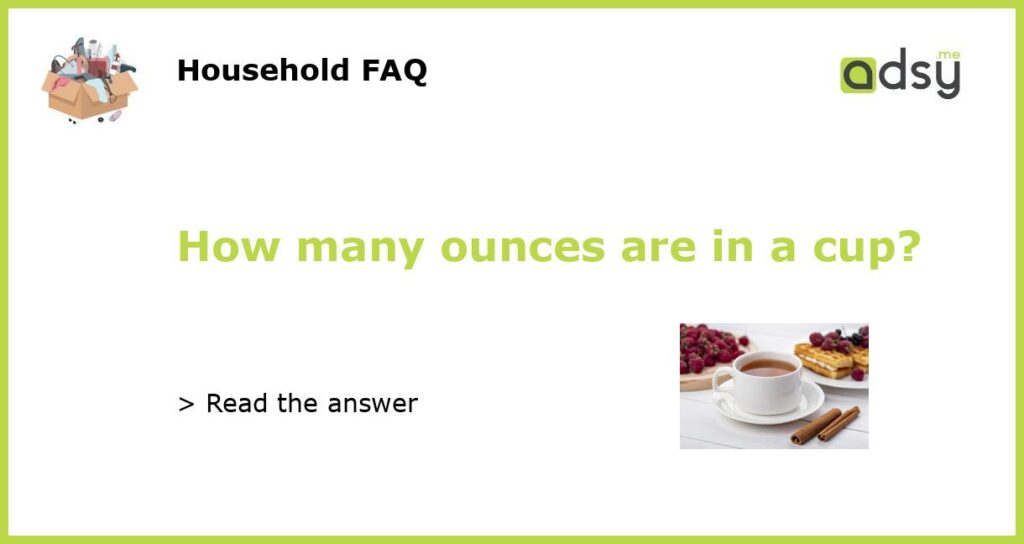How Many Ounces are in a Cup?
If you are new to cooking or baking, you may have found yourself asking the question, “How many ounces are in a cup?” Knowing the answer is important if you want to get accurate measurements for your recipes. In this article, we will explore the conversion between ounces and cups, and provide you with some helpful tips along the way.
The Conversion Rate
The conversion rate between ounces and cups can vary depending on the ingredient being measured. However, for most general cooking purposes, the standard conversion rate is:
1 cup = 8 ounces
This means that if a recipe calls for 2 cups of flour, you would need to measure out 16 ounces of flour. Similarly, if a recipe calls for 4 ounces of butter, you would need to use half a cup.
Fluid Ounces vs. Dry Ounces
It is important to note that there are two different types of ounces: fluid ounces and dry ounces. Fluid ounces are used to measure liquids, while dry ounces are used to measure solid ingredients. In most cases, when a recipe calls for ounces without specifying, it is referring to fluid ounces.
If a recipe calls for dry ounces, it will usually specify “oz” or “weight oz” to avoid any confusion. When measuring dry ingredients, it is also important to properly convert the weight of the ingredient to volume. This can be done using a kitchen scale or by referring to a conversion chart.
Converting Between Cups and Ounces
If you have a recipe that calls for ounces and you want to convert it to cups, or vice versa, you can use the following conversions:
1 cup = 8 fluid ounces
1 cup = 8 dry ounces
1 fluid ounce = 0.125 cups
1 dry ounce = 0.125 cups
For example, if a recipe calls for 16 fluid ounces of milk and you want to convert it to cups, you would divide 16 by 8, resulting in 2 cups of milk. Similarly, if a recipe calls for 4 cups of flour and you want to convert it to ounces, you would multiply 4 by 8, resulting in 32 ounces of flour.
Additional Tips for Measuring
When measuring ingredients, it is important to be as accurate as possible. Here are a few tips to ensure your measurements are precise:
- Use proper measuring cups and spoons: Using the correct measuring tools will help you achieve accurate results. Do not rely on regular cups or spoons as they may not provide accurate measurements.
- Level off dry ingredients: When measuring dry ingredients, such as flour or sugar, use a knife or spatula to level off the top of the measuring cup. This will remove any excess and provide an accurate measurement.
- Pour liquids at eye level: When measuring liquid ingredients, such as water or milk, place the measuring cup on a flat surface and pour the liquid until it reaches the desired measurement at eye level. This will help prevent over or under-measuring.
- Convert units as needed: If a recipe calls for a measurement you are not familiar with, take the time to convert it before starting. This will ensure your recipe turns out as intended.
- Practice makes perfect: The more you cook and bake, the more comfortable you will become with measuring ingredients. Don’t be afraid to experiment and adjust measurements to suit your taste.
By understanding the conversion between ounces and cups, and following these helpful tips, you will be well-equipped to tackle any recipe that comes your way. So go ahead and confidently measure those ingredients, knowing that you are cooking or baking with precision!






